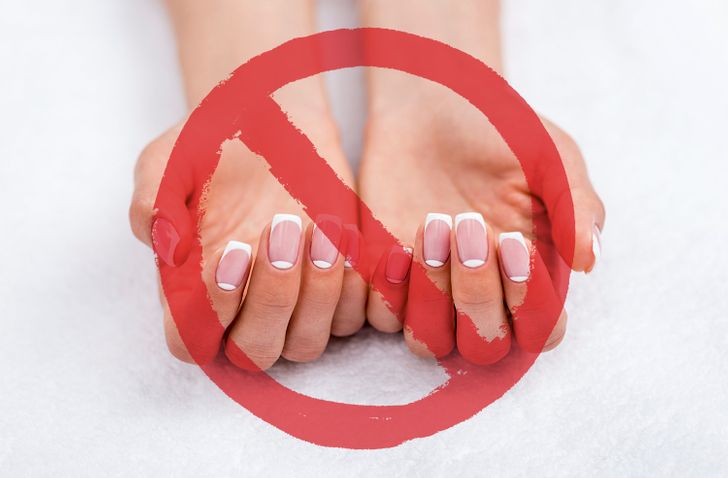
Donald Trump is once again moving into the White House. As of Wednesday morning, networks such as CNN and Fox, as well as news agencies such as the Associated Press, have all called the election for the controversial politician, who held his victory speech late Tuesday with his wife, Melania Trump, by his side.
The build-up to the election has been quite different for the husband and wife duo when compared with 2016 and 2020. Melania was barely seen with her husband for the entirety of this presidential campaign, instead remaining in New York City.
Just what will happen moving forward regarding her moving back into the White House again or not, only time will tell. Interestingly, a debate about whether Melania Trump was really at her husband’s side when Donald cast his vote for the 2024 election has taken the internet by storm. Was it a body double? Well, some say there’s one detail that proves so.
Late Tuesday evening, many television networks and newspapers began projecting President-elect Donald Trump as America’s 47th president. Now it’s done.
He becomes only the second-ever President to win two nonconsecutive terms, and in January will return to the White House once more. Early Wednesday, Trump addressed his supporters from Florida, thanking them for their support.
Donald Trump praised wife Melania Trump during victory speech
“We have a country that needs help, and it needs help very badly. We’re going to fix our borders, and we’re going to fix everything about our country,” Trump said. He added a promise to the American people that “every single day I will be fighting for you,” continuing to claim it would be the “golden age of America.”
Trump was surrounded by his close family, including his wife, Melania Trump, and his children. He and Melania’s son, Barron Trump, just turned 18 and voted for the first time in the election. In his speech early Wednesday, Trump praised Melania, calling her memoir the top-selling book in the country.
“She works very hard to help people. So, I just wanted to thank her,” Trump said.
Melania was at her husband’s side during his past presidential campaigns, but in 2024, it was a whole different story. The former POTUS released her memoir earlier this year, and in its pages openly disagreed with her husband’s stance on abortion, stating that she supported women’s reproductive rights.
“It is imperative to guarantee that women have autonomy in deciding their preference of having children, based on their own convictions, free from any intervention or pressure from the government,” Melania wrote in her memoir Melania.
Why Melania Trump has been absent from Donald Trump’s presidential campaign
“Why should anyone other than the woman herself have the power to determine what she does with her own body?” she added. “A woman’s fundamental right of individual liberty, to her own life, grants her the authority to terminate her pregnancy if she wishes.”
After her husband lost to President Joe Biden in the 2020 race, Melania largely retreated from the public eye. She has remained absent from Donald Trump’s public endeavors, including most of his most recent presidential campaign.
What she’s been up to instead was on many people’s minds, not least Trump voters. During a town hall meeting in February, Fox News Host Laura Ingraham asked Donald if Melania would join him at his rallies. Trump explained that Melania’s dedication lay with their son, Barron.
“They love her, I’ll tell you,” Trump responded. “And you know her. She’s a very brilliant person. She speaks many languages, the whole thing.”
“Her life revolves around that boy, [he’s] so important to her. At the same time, it also revolves around our country and the success of our country. She’s raised a lot of money for charity.”
Barron Trump began his first year at New York University in September. That is reportedly why Melania hasn’t been with her husband on the campaign trail; instead, she has focused on supporting her son.
Melania Trump “not likely” to use White House as primary residence, source says
The former and future First Lady has barely spoken about her husband and his presidential campaign, and many have wondered whether she will accompany him to the White House.
People Magazine spoke to sources “in Melania’s orbit” about it.
“If Melania becomes first lady again, of course people expect her to move into the White House and perform appropriate duties,” a source close to the Trump family said, adding that Melania isn’t keen on relocating to 1600 Pennsylvania Avenue.
“She will have her private living apartment there, and she has her home in New York, and her home at Mar-a-Lago in Palm Beach. She will spend time in all of these places,” the source added, concluding that it’s “not likely” that the White House will be her primary residence.
In the end, on election day, Melania Trump finally appeared by her husband’s side when they went to cast their vote at the Morton and Barbara Mandel Recreation Center in Palm Beach, Florida.
Social media users were quick to comment on Melania’s lack of enthusiasm for being back in the spotlight, with one claiming that she even looked as if she was “attending a funeral.”
Body language expert says Melania Trump looked “solemn”
It wasn’t only social media users on X that had a say about Melania. Body language expert Judi James told the Mirror that Melania’s election day look was very different from her past styles.
“By Melania’s normal standards this is a very subdued, down-played look as she accompanies her rather low-energy-looking husband with his slumped shoulders and face partly-covered by a baseball cap to cast their votes,” Judi told the Mirror. “Her smile seems almost compensatory here as Trump’s facial expression is rather solemn and he graciously and gallantly motions for her to walk in first.”
The body language expert continued: “Melania’s FLOTUS looks tended to be high-vis numbers that became increasingly tailored, high-status power-suits towards the end of their term, so this casual shirt dress with her hair softly flowing to the side has no echoes of that previous stint. The Trump’s mood here might have been self-described as ‘confident’ but that sentiment is not reflected in their body language in these photos.”
So, Melania might not have looked enthusiastic about being back in the spotlight. But according to a new theory, she wasn’t even there at all. The internet went wild over a quite absurd theory that claimed it was, in fact, a body double.
‘Fake Melania Trump’ theory floods social media
Melania Trump wore a chic Christian Dior black-and-white polka dot dress, the same she wore for her Fox News interview in September to promote her memoir. However, as Medias Touch editor Ron Filipkowski shared a clip with Melania stating that she had “been wearing sunglasses inside all day today,” the conspiracy theories began spreading,
Some claimed she had been swapped with a body double for the cameras. “This is absolutely, categorically not Melania,” one X user wrote, as per Daily Mail. “This imposter’s been wearing sunglasses indoors all day.”
A second said: ‘How is a man who walks around with a fake wife even a contender for president?’ Another X user claimed: “The check didn’t clear in time for the real Melania to make an appearance, so they had to bring the doppelganger off the bench.”
As reported by the Daily Beast, another user stated that several details ‘proved’ it was a “fake Melania.”
“Rings missing, wrong nail style & length, no smile lines in the jawline [or] lower cheek, bust is half the size it should be,” one stated, while another said that the woman in the video looked “20 years younger” than Melania Trump.
What do you think about Donald Trump returning to the White House? Please share this article on Facebook and give us your opinion!
12 Beauty Tricks That Make French Women Naturally Charming
In every country, women have their own secrets for how to stay young and beautiful. But French women have the most natural charm in the world because they somehow manage to look 18 at the age of 42, like Audrey Tautou. Of course there are no universal tips that can help everyone, but French women definitely have some useful habits that help them stay charming at any age.
Bright Side has discovered the secrets of the beauty routine that almost all French women follow.
12. They don’t use contouring.

French women don’t like contouring because it hides the natural features of the face and looks unnatural. What they do love is a little bronzer on the cheeks to make themselves look fresh and shiny.
11. They don’t mind imperfection.

If you take a closer look at French women and their style, you will notice that almost all of them prefer a little messiness. It may be about hair, it may be about their accessories, like a scarf, or the way their clothes are sewn. This allows them to look natural and free, as if they don’t do anything special to look beautiful.
10. They prefer red lips.

You can always brighten up your appearance by using red lipstick. Women from Paris are completely convinced of this: it does not matter what your style is, you could be wearing torn jeans and a T-shirt or a dress with a huge hat. But adding red lipstick will immediately elevate any look.
9. They don’t get French manicures.

True French women never have “the perfect manicure” that took several hours to apply. Because this would send the message that you actually had to spend an immense amount of time, and money, on something so small.
Parisian women think that it is unnecessary, because they were already born beautiful and they are not going to spend hours on something so trivial. So, the most popular nail style among French women is short nails with clear polish or no polish at all. The same goes for their pedicure.
8. They have a hair styling secret.
French women prefer to not damage their hair and they don’t use a hair dryer or a flat iron every day. They mostly use expensive products — all of them have their favorite hair masks, and oil for their hair, and also a good hairbrush made of natural materials.
This is what they do to hair in France: they wash it and let it dry without a hair dryer, and the next day, when it becomes smooth, they style it.
7. Their makeup bag is not full of products.

French women have only 2 lipsticks: one natural color, and a red one for a great mood or an evening out.
They choose a light powder and a foundation to make their skin shine. But they don’t reapply it every hour, mostly so they don’t look like a wall with plaster on it. Healthy skin is supposed to shine just a little. They consider this is beautiful and natural.
Eye makeup only means mascara on the eyelashes. In the evening, they might add a messy, smoky eye effect. But it is supposed to be imperfect with that French element of messiness.
So, the 6 products in a French woman’s bag include: a good foundation, a powder with a shine, a mascara, an eyeliner, and 2 lipsticks. Now that’s an idea everyone should try!
6. They spend good money on haircuts.
Women in France are sure of one thing: you can wear €10 clothes and nobody will ever know that they are cheap, but get a cheap haircut once and your appearance will be completely ruined. This is why they are ready to pay a fortune to a good hairstylist and they go back to the same person for many years.
Also, a good haircut doesn’t need any fixing, so you don’t have to style your hair every day, only on very special occasions.
5. They have a simple beauty routine.
If there is one thing a French woman really needs it’s expensive cosmetics like a good face cleanser, a sunscreen, and a moisturizer. They will often add different oils for body and hair to this list.
In France, women live according to “the less is more” principle. They use just a few cosmetic products, but the ones they use are expensive.
So, when it comes to peels that are used all over the world, French women don’t really use them. They prefer masks, they use them really often, and they use a lot of different kinds — because good masks restore and rejuvenate the skin.
4. They believe in natural eyebrows.

You will never see a real French woman who has very heavy eyebrows that are an unnaturally dark color. Instead, they take good care of their eyebrows, making sure that they stay healthy, big, and thick.
They may put a little makeup on their eyebrows, but most of the time they don’t even do that. They just use some gel for styling.
3. They don’t diet.

Not a single French women in her right mind would ever start a diet. They are completely sure: the short-term effect of a calorie deficit is not only not worth the effort, but will also damage the skin because of the lack of vitamins.
For them, the main secret to having a beautiful body is eating a little. They eat anything they want, but not a lot of it. And when they feel that they are full, they just stop eating, not feeling forced to finish the meal.
However, French women do try to avoid an excess of sugar in their diet because it damages the skin. But they are not afraid of foods with a lot of fat.
2. They believe in the power of cold showers.

French women know about the importance of having a cold shower after a hot bath. This stimulates the blood circulation and helps to keep the skin toned. As a result, they always look fresh and cool.
1. They accept themselves as they are, flaws and all.

French women rarely need the services of plastic surgeons. It is very unlikely that you will meet an actress, a model, or a fashion blogger in Paris who has a fake nose, cheekbones, or lips that have fillers.
French women learn to accept themselves as they are, flaws and all. This is what makes them so different and alive. This is why French women are always able to highlight their advantages and their uniqueness.
Do you have your own tricks for how to stay beautiful that have been passed on from generation to generation? Share them with us!
Please note: This article was updated in April 2022 to correct source material and factual inaccuracies.
Preview photo credit kyliejenner / Instagram, East News



Leave a Reply